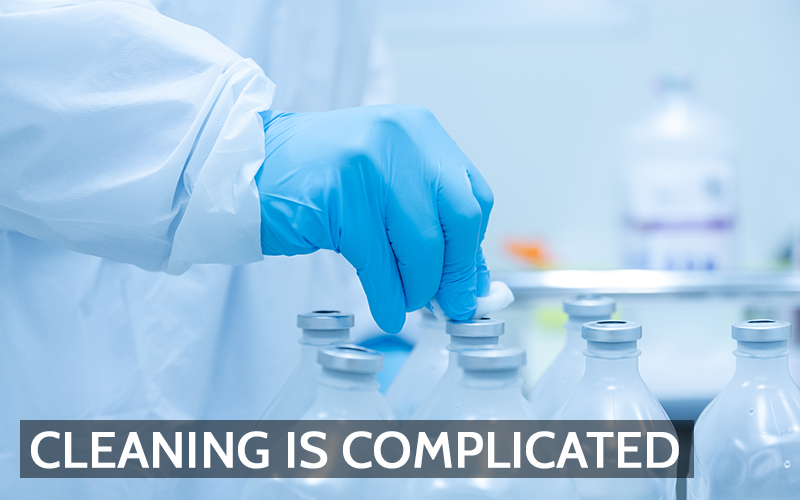Maintaining cleanrooms and other controlled environments demands meticulous attention to design, material selection, and strict protocols to prevent contamination. These spaces—essential in fields like pharmaceuticals, biotechnology, and electronics—require a highly controlled level of cleanliness to protect sensitive processes and products. Let’s delve into some key aspects of keeping these environments clean.
Understanding the Role of Airflow and Filtration
Airflow patterns in cleanrooms are critical for minimizing particle accumulation. High-efficiency particulate air (HEPA) or ultra-low penetration air (ULPA) filters are commonly used to trap airborne particles. These filters work best when coupled with a well-thought-out air change system, maintaining a specified amount of air exchange per hour to reduce contaminants.
Excessive air change rates, though, can lead to turbulence, inadvertently stirring particles and reducing air quality. Striking the right balance between airflow volume and velocity is crucial, as this prevents stagnation and particle build-up in specific areas. By understanding airflow patterns and leveraging technologies like computational fluid dynamics, cleanroom operators can design efficient air systems that support the highest levels of cleanliness.
Choosing Cleanroom Materials for Surface Cleanliness
Material selection is paramount when building or retrofitting cleanrooms. Surfaces must resist particle shedding, withstand repeated cleaning, and support the effectiveness of disinfectants. Stainless steel and epoxy-coated surfaces are widely favored due to their durability, non-porous quality, and ease of cleaning.
Selecting the right materials for walls, floors, and ceilings can also reduce contamination. Modular wall panels made from materials like high-pressure laminates or coated aluminum prevent microbial growth and are easy to clean, essential in environments with strict contamination controls. Floors, meanwhile, must withstand heavy use and regular cleaning, making seamless materials like epoxy an ideal choice. These flooring materials also help in preventing static charges, which can attract and hold particles in the environment.
Managing Contamination with Effective Cleaning Protocols
Effective contamination control doesn’t end with materials and airflow; rigorous cleaning protocols are equally important. Regular disinfection of all surfaces, including hard-to-reach areas like equipment crevices and overhead pipes, is necessary to eliminate lingering contaminants. Tools like pre-saturated wipes and specialized cleanroom mops can aid in maintaining thorough cleanliness across diverse surfaces.
Equally important is the order and technique of cleaning. Cleaning from “cleanest to dirtiest” and using overlapping mop strokes ensures that all areas receive thorough coverage. These protocols are especially critical for irregular surfaces, where improper cleaning can lead to microenvironments harboring contaminants.
Addressing Human-Induced Contamination
Personnel are among the most significant sources of contamination in cleanrooms, shedding particles and microbes that compromise the sterile environment. To mitigate this, strict gowning protocols are enforced, requiring personnel to wear coveralls, gloves, and masks to minimize particle release. Additionally, training personnel on mindful movements and behaviors can reduce contamination, as unnecessary motion stirs up particles and increases contamination risk.
Restricting rapid movements, talking less, and following precise gowning steps help maintain cleanliness. By emphasizing hygiene and careful behavior within the cleanroom, contamination from human sources can be greatly minimized, protecting the integrity of the controlled environment.
The Impact of Equipment and Temperature Control
Temperature gradients within a cleanroom can introduce challenges to maintaining cleanliness. When warm and cool air meet, thermal flows can result, potentially disrupting particle patterns and creating contamination risks. Equipment that generates heat can amplify this effect, so maintaining consistent room temperatures and using appropriate HVAC setups are essential to preserving air quality.
Cleanroom design must also accommodate equipment, as its layout can affect air distribution. By placing air diffusers in optimal locations and maintaining sufficient space around large equipment, cleanrooms can reduce turbulence and ensure uniform airflow, supporting contamination control.
Final Thoughts
Cleanroom maintenance is a multi-faceted task requiring strict adherence to cleaning protocols, careful material selection, and efficient airflow management. With the right practices, controlled environments can achieve and maintain the high standards necessary for sensitive operations, protecting both product integrity and operational compliance.
Maintaining cleanliness in these spaces demands continuous attention and adaptation, but with thorough planning and the right strategies, it’s achievable and essential.


